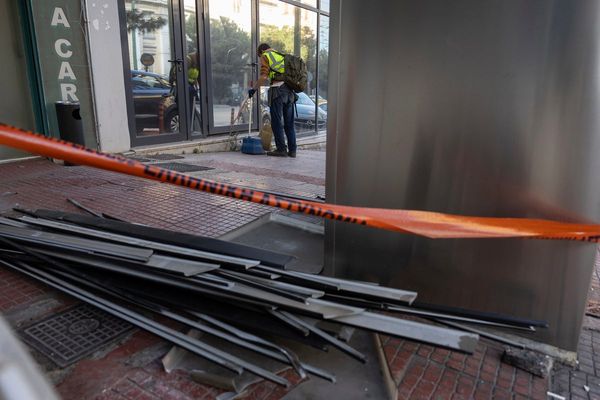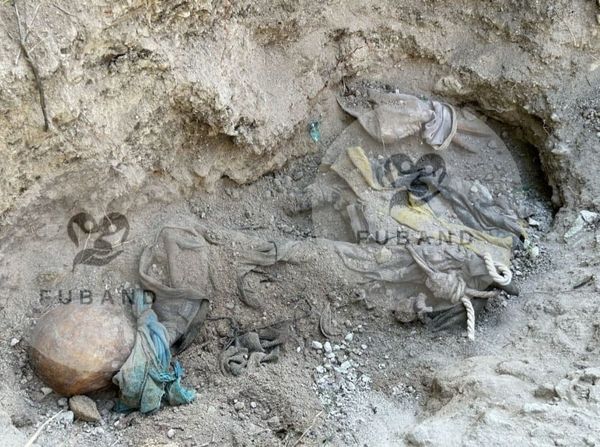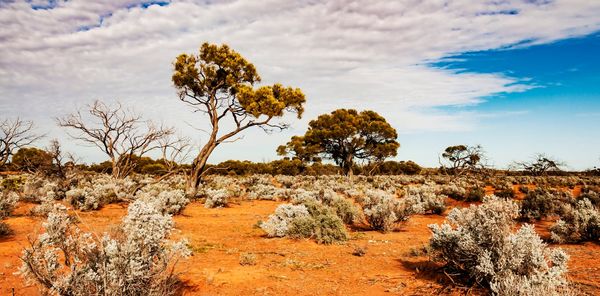
Among the concerns listed by the 2,000 farmers who converged on the lawns of Parliament House in Canberra last week was the protection of prime agricultural land from renewable energy developments.
It has become a common refrain. The National party leader, David Littleproud, warned at the party’s annual federal council on Friday of the risk to prime agricultural land from energy transition projects. The mining magnate Gina Rinehart took to the stage at a business event last year to warn that one-third of Australia’s prime agricultural land could be “taken over” by renewable energy projects. In almost every campaign against a proposed development in the bush, the potential impact on prime agricultural land is raised as a key concern.
So it has been interesting to see the response to the Aboriginal heritage protection order issued last month by the environment minister, Tanya Plibersek. Plibersek made a partial declaration under section 10 of the Aboriginal and Torres Strait Islander Heritage Protection Act to protect cultural heritage in the headwaters of the Belubula River, scuppering a proposal from the mining company Regis to build the tailings dam for its proposed McPhillamys open-cut goldmine on the site.
The decision was made in response to an application by the Wiradjuri elder Aunty Nyree Reynolds, supported by the Wiradyuri Traditional Owners Central West Aboriginal Corporation. In announcing her decision, Plibersek said the area was linked to initiation ceremonies, the details of which had been disclosed to her privately and must remain confidential due to cultural sensitivity.
Despite Plibersek’s decision not to extend the protection order to the mine site itself, Regis said the decision “made the project in its current form unviable”.
The circumstances surrounding the decision are complex: the Wiradyuri Traditional Owners Central West Aboriginal Corporation is not the registered Aboriginal party under state heritage laws. That’s the Orange Local Aboriginal Land Council, which initially opposed the proposed mine but later changed its official position to neutral. The involvement of a group other than the registered Aboriginal party is not unusual in cultural heritage battles, neither is the confidentiality of culturally sensitive information. A robust set of Indigenous heritage laws can deal with both of these issues. Whether the laws are robust is another matter entirely, but we’ll get to that later.
For now, let’s look at the broader impact of the decision. Twelve months ago graziers David and Bec Price, whose 1,200ha property at Blayney in New South Wales includes 10km of river frontage, told Guardian Australia’s Rural Network that the river flats were “charged with water all the time” and they were concerned the upstream development could affect their livelihood and the region’s productivity. “We don’t need gold to survive,” Bec Price said. “But we need to eat, and we need water to eat.”
Farmland around Blayney is highly productive and tightly held, with a per-hectare price among the highest in the central west, according to the 2023 Australian Farmland Values report.
The Prices are members of the Belubula Headwaters Protection Group, a collective of farmers and other concerned locals which celebrated the section 10 declaration.
That is not to say that every farmer in the region opposed the mine, just as the opposition to any given renewable energy development is not unanimous. Many supported it for the money and jobs it might bring.
But it is notable that criticism of the decision has framed it as a push to curry favour with inner-city seats and ignored grassroots campaigns by Indigenous and non-Indigenous locals. If the story had been reported as protecting farmland as well as protecting heritage, would that criticism be different?
Littleproud told the Central Western Daily this month that his party would overturn the heritage protection order and approve the mine if elected. The opposition leader, Peter Dutton, went a step further, saying he would overhaul the federal Indigenous heritage laws.
It’s probably too much to hope that Dutton meant he intended to act on recommendations made by a 2020 parliamentary inquiry after the destruction of Juukan Gorge. That inquiry, convened after Rio Tinto blew up a 46,000-year-old archaeological site in the Pilbara, called on the parliament to “urgently review the adequacy” of the laws, which have been used a scant four times in the past decade.
Interestingly, all four have been in NSW: the Bellwood sacred site in Nambucca Heads; the Awabakal women’s site, the Butterfly Cave; a sacred women’s site at Mount Panorama/Wahluu; and the Belubula River. All but the last were issued under the former Coalition government. And only one, the Belubula decision, concerned a proposed mining development.
Among the Aboriginal and Torres Strait Islander Heritage Protection Act’s limitations is that it is designed as legislation of last resort, meaning an application can only be made after state and territory avenues have failed. In most cases protection is not granted. As the Wintawari Guruma Aboriginal Corporation wrote in its submission to the 2020 inquiry, the federal laws are “cumbersome, slow and ineffectual” and the “economic momentum” behind developments means protection orders are rare. In the case of Juukan Gorge, no application for an emergency order under section nine of the act was made because representatives for the Puutu Kunti Kurrama and Pinikura traditional owners did not understand the process and could not get the relevant adviser from then environment minister Sussan Ley’s office on the phone.
The interim report produced by that inquiry was titled “Never Again”. It’s a remarkable sign of political amnesia that we’re now arguing about whether the laws are weighted too strongly in favour of Aboriginal people.










